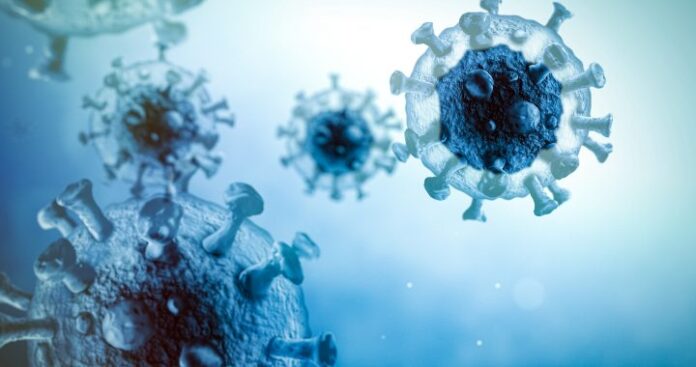The World Health Organization (WHO) is closely monitoring two new COVID-19 subvariants of Omicron, the highly transmissible variant of concern now dominant around the world.
Since January, more than 300 cases of the BA.4 and BA.5 sub-lineages have been reported in several countries, according to data by cov-lineages.org. Most of those cases have been detected in South Africa.
As of May 3, Canada had detected three cases – two of BA.4 and one of BA.5, the Public Health Agency of Canada (PHAC) told Global News on Friday.
“As with all new sub-lineages of COVID-19, scientists from the Public Health Agency of Canada (PHAC), along with national and international experts, are actively monitoring and evaluating the BA.4 and BA.5 sub-lineages and the associated studies,” said PHAC spokesperson Anne Genier in an emailed statement.
WHO began tracking BA.4 and BA.5 in mid-April. They are in addition to previously discovered subvariants BA.1 and BA.2, the latter of which is dominating COVID-19’s global spread.
As part of their evolution, all viruses mutate over time and have subvariants that have a different genetic makeup than the original variant but a common origin.
The WHO says BA.4 and BA.5 have acquired a few additional mutations that may impact their characteristics.
Here is what we know so far about these subvariants.
BA.4 and BA.5 are driving a spike in new COVID-19 cases in South Africa, according to the WHO.
Last week, more than 32,000 new infections were reported in the country, representing a 67 per cent increase from the week before, the weekly WHO update published on May 4 showed.
Data from South Africa is showing that BA.4 and BA.5 seem to have a growth advantage over other sub-lineages of Omicron, the WHO told Global News.
Because of additional mutations, BA.4 and BA.5 are about 10 per cent more transmissible compared to BA.2, said Dr. Donald Vinh, an infectious disease specialist and medical microbiologist at the McGill University Health Centre (MUHC).
“The only way the virus is going to mutate and propagate is if it transmits within the community,” he said
“Therefore, the logical and scientific solution is to mitigate community transmission by any and all means necessary,” Vinh said, urging indoor masking, avoiding crowded areas, ventilation and vaccination.
Experts warn ‘stealth’ Omicron fuelling start of Canada’s 6th COVID-19 wave – Mar 29, 2022
Globally, the number of cases and the number of countries reporting the detection of these subvariants are rising, the UN health agency said in its weekly update.
As more cases are reported, experts say it is only a matter of time before they will replace previous strains and start to dominate.
“I think definitely they would take over because we see that they start to grow in South Africa, and when you see they (cases) start to go up, it means that they are taking over the previous one,” said Dr. Horacio Bach, an infectious diseases expert at the University of British Columbia.
Scientists are trying to determine if BA.4 and BA.5 can cause more severe illness in people who are infected and lead to an increase in hospitalizations.
Trending Stories
Judge rejects B.C. government’s bid to drop case against COVID-19 vaccine orders
Canada needs new homes built, but construction industry headed for retirement wall
A number of studies are also under way that are looking at disease severity in the lab.
“It’s too soon to know whether these new subvariants can cause more severe disease than other Omicron subvariants, but early data suggest vaccination remains protective against severe disease and death,” said Dr. Tedros Adhanom Ghebreysus, WHO’s director-general, during a virtual news conference on May 4.
Fact or Fiction: Omicron infection appears to produce shorter-lived immunity, experts say – Apr 8, 2022
The WHO told Global News it is seeing some increase in hospitalization in South Africa but that can be expected when there is an increase in cases.
Vinh said it will be “extremely important” to keep a close eye on how BA.4 and BA.5 impact hospitalizations, not just in South Africa, but also in Europe.
“What we’ve seen so far in the last six waves is that what happens in Europe doesn’t just stay in Europe, it predates or predicts what happens in … parts of Canada,” said Vinh.
A preprint study that has not been peer-reviewed was released on May 1 and concluded that BA.4 and BA.5 can dodge antibodies from earlier infection well enough to trigger a new wave, but are far less able to thrive in people vaccinated against COVID-19.
“It’s always concerning when you have a variant that is a little bit more transmissible and capable of dodging antibodies that were generated from the previous waves,” said Vinh.
South African scientists took blood samples from 39 participants previously infected by the original BA.1 Omicron lineage when it first showed up at the end of last year.
Fifteen were vaccinated; eight with Pfizer’s shot, seven with J&J’s — while the other 24 were not.
“The vaccinated group showed about five-fold higher neutralization capacity of BA.4 and BA.5 and should be better protected, although levels may decrease with waning,” the study’s authors said.
Epidemiologists: COVID-19 infection doesn’t protect you from reinfections – Apr 19, 2022
In the unvaccinated samples, there was an almost eightfold decrease in antibody production when exposed to BA.4 and BA.5, compared with the original BA.1 Omicron lineage. Blood from the vaccinated people showed a three-fold decrease.
Studies are under way to look at how effective prior immunity built up through either infection or vaccination is at protecting against BA.4 and BA.5 compared to other subvariants.
“As with all of the sub-lineages classified under Omicron, there is some level of immune escape,” said Dr. Maria Van Verkohve, WHO’s COVID-19 technical lead, in a Twitter video on May 3.
Bach said even if you are vaccinated, it is possible to get infected with the new variants.
Still, experts are hopeful that the current vaccines will work to prevent severe disease and death, encouraging people to get vaccinated.
“On a global scale, it really does mean that we need to get the entire world vaccinated adequately against COVID so that we can decrease the emergence of transmission and the emergence of variants,” said Vinh.
The WHO has stressed the need for countries to continue testing and sequencing for new variants.
“In many countries, we’re essentially blind to how the virus is mutating. We don’t know what’s coming next,” said WHO chief Ghebreysus.
The Canadian government has a strong monitoring program in place with the provinces and territories to identify COVID-19 variants in Canada, including the Omicron variant of concern and its sub-lineages, PHAC’s Genier said.
However, experts say provinces are not sufficiently keeping track of new variants leading to a “gross underestimate” of actual cases in the country.
Frustration rises over COVID-19 surge amid lifting measures, new XE recombinant variant – Apr 4, 2022
“We absolutely need active surveillance of what is circulating in each of our provinces and our communities,” said Vinh.
“When Public Health Agency of Canada tells us that they’ve identified collectively three cases nationally, that is really just a gross underestimate of what’s actually circulating.”
— With files from Reuters
© 2022 Global News, a division of Corus Entertainment Inc.



